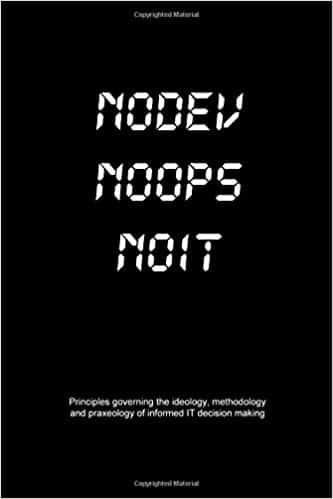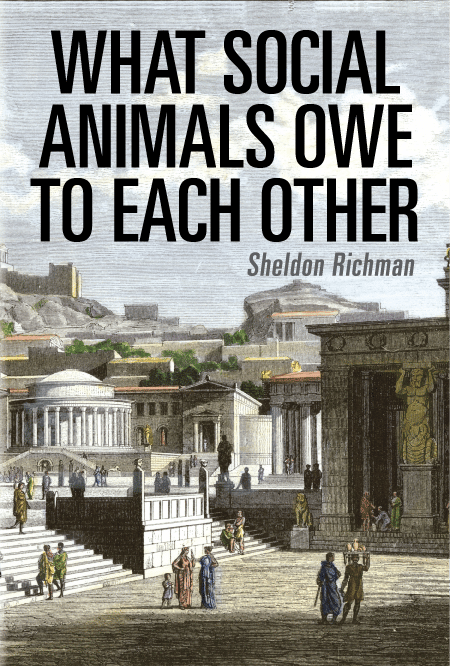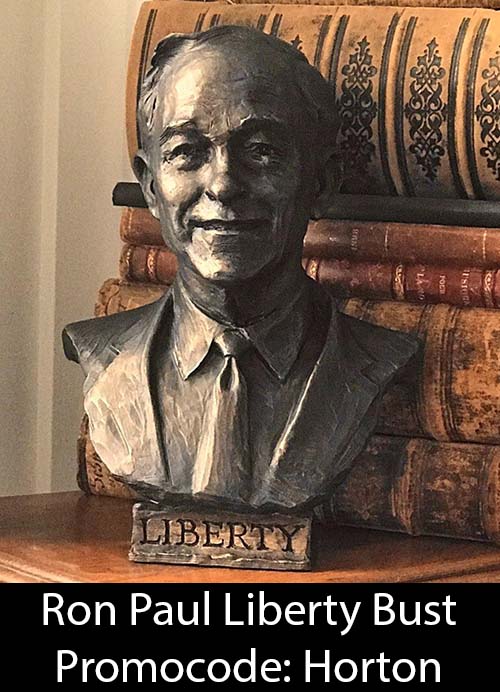Scott talks with Robert B. Stinnett about the Pearl Harbor deception, and about the continued scapegoating of FDR’s fall guys. The complete first hour. Audio Stream
MP3 Link
Transcript
Scott Horton: All right, my friends, welcome back to The Weekend Interview Show. On December 6th, 1941, 80% of the American people wanted to stay out of the war in Europe. On December 7th, 1941, Japanese planes attacked the U.S. Naval base at Pearl Harbor, Hawaii, which led to America’s entry into the Second World War against the Axis powers. Here to explain how and why that happened is Robert Stinnett. He’s a media fellow at The Independent Institute in Oakland, California. He’s a former journalist and photographer for the Oakland Tribune, earned 10 battle stars and a Presidential Unit Citation while in the United States Navy from 1942 through ’46, and is the author of the book Day of Deceit: The Truth About FDR and Pearl Harbor. Welcome to the show, Mr. Stinnett.
Robert Stinnett: Thank you. Glad to be here.
Scott Horton: You were in the Navy during World War II. Was that in the Atlantic or in the Pacific?
Robert Stinnett: In the Pacific.
Scott Horton: And when did you begin to investigate unofficial truths about the attack on Pearl Harbor?
Robert Stinnett: Well it wasn’t until 1982 that I became interested in it because I read a book that we had a cryptographic monitor station in Honolulu prior to Pearl Harbor and it was intercepting the messages of the Japanese fleet. That was the first I heard about it, so I went to my editor at the Oakland Tribune and asked to get in on that story.
Scott Horton: And what did you find?
Robert Stinnett: I contacted the U.S. Navy, and they did confirm that they had a monitor station. That’s where they were intercepting the messages of the Japanese fleet prior to December the 7th. And actually they had been listening to it for many months, and they were able to trace the origin station for the attacks on Pearl Harbor, Wake and Guam and the other U.S. and Allied positions in the Pacific.
Scott Horton: So it wasn’t just the diplomatic codes that they had broken. They had broken actually all the Japanese naval codes as well.
Robert Stinnett: That is right. Most of your listeners and those who read history of World War II are sort of familiar with the breaking of the Japanese diplomatic codes, but what was kept secret from all of the investigations at Pearl Harbor was that we had also broken the Japanese military codes. That’s the, at least the Navy codes and most likely the Army codes also, though I’ve concentrated on the Japanese naval codes that were used to organize the attack on our bases there in the Pacific.
Scott Horton: When you were a sailor back during World War II, what did you believe was the best intelligence of enemy ship movement?
Robert Stinnett: Well, I believed all of the information that was released at that time that the Japanese fleet was on radio silence and was not detected approaching Pearl Harbor or Guam or Wake or any of the other U.S. bases there in the central Pacific, and it wasn’t until 1982 that I learned different, and that’s when I started the pursuit, trying to get the truth of this really momentous accomplishment of our cryptographers.
Scott Horton: How many died at Pearl Harbor?
Robert Stinnett: There was 2500 soldiers and sailors, Marines and civilians that were killed. That’s in round numbers. And there were hundreds more injured.
Scott Horton: Well, if our government had broken all the codes and knew that the Japanese Navy was on its way to attack Pearl Harbor, why didn’t they stop them?
Robert Stinnett: Well, the entire plan was to get Japan militarists to seize control of the Japanese government and attack us at Pearl Harbor, and then we provoked them into doing that, cutting off their oil. And the reason for that was to trigger a treaty that Japan, Germany and Italy had signed called the Tripartite Pact, and that was signed in September 1940. And about 10 days later the U.S. Navy came up with a plan to trigger that pact by using eight provocations against Japan that the author said would cause them to institute an overt act of war against the United States. And that was what was the entire U.S. strategy. The idea was to get us into war with Germany, which was the real enemy as far as U.S. planning was concerned.
Scott Horton: And in your book you reproduce this memo by a Naval intelligence officer named Arthur McCollum from October 7, 1940, and it is, as you just said, an eight-point or eight-provocation plan to maneuver the Japanese into firing the first shot. What were those eight steps?
Robert Stinnett: Yes, that is correct. I — in our discussion here I’m calling them provocations. He called them eight actions that he said would cause Japan to commit an overt act of war. One of them was to, one of the actions was to send U.S. cruiser divisions into Japanese territory and provoke the Japanese with really invading their territory. Another was to send submarine squadrons into the Far East, and another was to give aid to China, which was at war with Japan at that time. Another was to cut off all oil supplies and embargo steel and war supplies for the Japanese economy and for their, you know, for their structure. Another was to get British and Dutch to join us in the same type of embargoes. And these were slowly instituted against Japan, and the final one was in July 1941, just about 5½ months before Pearl Harbor, which was a total embargo, and our American cryptologists saw that as a — Japan had no place to go but for war. But then all this information was kept from the Hawaiian commanders, that was Admiral Husband Kimmel and General Walter Short, because we wanted this overt act of war to come on Hawaii and enrage the American public so that we could trigger that Tripartite Pact that I mentioned.
Scott Horton: Now this eight-action memo, I have to say, my friend Anthony Gregory works at The Independent Institute in Oakland and has held this document in his hand and read it too. How did you get this eight-action memo by Arthur McCollum?
Robert Stinnett: Well, when I started research on this project in 1982 and in ’83, I had asked to see all of the documents involving Japanese plans for attacking Pearl Harbor, and this was addressed to the U.S. Navy, who had custody of these records. But I was denied access to them until 1995. And at that time the Navy did release thousands of documents, and on the very first day that I started on this, this McCollum memo came in one of the boxes. I had no idea it was there. It had never been reported in any of the investigations of Pearl Harbor, and there were about nine of them. No other media or authors had written about them. So I came across that in January 1995 and realized that if this is true and that I could document these provocations, that I had a real cause for the overt war action.
Scott Horton: And did you find — ? [crosstalk]
Robert Stinnett: […] It took me all of 1995 to check out those eight actions.
Scott Horton: And you’re saying that the United States government did indeed implement all eight of the actions recommended in McCollum’s memo?
Robert Stinnett: That is right. President Roosevelt authorized them all, his Chief of Naval Operations or his Army chief, and it’s all documented in White House records, the Army records and the Navy records, and the State Department, FBI records also confirm this, were all placed into effect.
Scott Horton: Mr. Stinnett, you’re making the case that the national government of the United States aided and abetted the mass murder of thousands of Americans by a foreign power, and yet in your book you say that you feel it was justified. How could this be?
Robert Stinnett: Well, at the time, in fact I document it in the book, there was an isolation movement in this country led by Charles Lindbergh, Henry Ford the industrialist, Father Coughlin, who was a Catholic priest who was a very popular radio priest, and others. There was a huge movement. Eighty percent of Americans wanted nothing to do with Europe’s war. See, the danger to our country was really from Germany and not so much from Japan, because Japan could be cut off at any time, and it was to end this isolation movement, to get Japan to attack us and then trigger that Tripartite Pact. It was a backdoor approach to war. And many people had suggested that was true during the investigations of the 1940s. But no one had the proof, because it was all locked up in Navy vaults, and I was fortunate to be able to get these, since the Freedom of Information Act, in January 1995.
Scott Horton: I’m sorry, sir, but the sacrifice of a few for the greater good seems a lot like the ideology that America was supposedly fighting in World War II.
Robert Stinnett: Well, the — you’re right. That is — of course, that was used, that premise was used in, early in 1848 by President Polk in the Mexican War where all sorts of — between U.S. Grant, you know, the president who then was in the Army, they provoked Mexican troops into starting the Mexican War, and then President Abraham Lincoln used the provocation policy at Fort Sumter. I think more people know about the USS Maine in the Havana harbor in 1898 that caused the Spanish-American War. It’s a policy that’s been used —
Scott Horton: The Lusitania as well.
Robert Stinnett: — since earliest times.
Scott Horton: The Lusitania as well that got us into World War I.
Robert Stinnett: Yes, right, there’s another one. Yes, that’s right.
Scott Horton: And the Gulf of Tonkin, and inviting Iraq into Kuwait. This sort of —
Robert Stinnett: Absolutely. And —
Scott Horton: It seems like we’ve been lied into every war since the war for Mexico.
Robert Stinnett: That is — at least. As far as the United States is concerned, and we certainly, the weapons of mass destruction is a provocation type policy.
Scott Horton: And for those interested in that, stay tuned, in 15 minutes or so we’re going to talking to Jude Wanniski all about the, I guess the Pearl Harbor version, or the Iraq version of the Pearl Harbor lie to get us to invade that country. But, in any case, I think we should get back a little bit more to the details here, Mr. Stinnett. In your book you say that there were 36 men who were inside the loop and were allowed to read the transcripts of the decoded naval transmissions. Is that right?
Robert Stinnett: Yes, that’s right. There were probably many more, because you have to include the operators, the intercept operators, the cryptographers that were actually intercepting these messages that were in Japanese Morse code, the dot dash. It’s entirely di— it’s a dot-dash system, but it’s entirely different than the, what we’re all familiar with, with Morse code in the 1940 era. But these operators knew as well as the leaders of our government at the time.
Scott Horton: And you talk in your book about how the intercept stations that were taking up all this radio traffic from the Japanese were actually located all throughout the Pacific and even at Hawaii, and yet the commanders did not know, while people below them were on the inside. Is that right?
Robert Stinnett: Yes, that is right. And there were 25 monitor stations in the Pacific Basin that went from the West Coast of the United States up to Alaska and then down in China and in the Netherlands, the East Indies, and the British station at Singapore. All of these were monitoring the Japanese fleet frequencies, and also the Japanese army frequencies. So both the United States and Great Britain and the Dutch, because they controlled the Netherlands East Indies at the time. So they were all listening to these messages. We had radio direction finders. We could locate the Japanese warships when they broke radio silence, and then you could locate them where they were in the Pacific.
Scott Horton: So MacArthur at the Philippines, he knew that Pearl Harbor was about to be attacked himself.
Robert Stinnett: Yes, he did. Because his cryptographers were monitoring the Japanese Imperial Army radio frequencies, and they intercepted the message that the war would start on December 8th, and that was Tokyo time, or December 7th Hawaii time.
Scott Horton: And do you have proof in your declassified documentation that this information was being received at the highest levels of the military, or do you just know where it wasn’t going?
Robert Stinnett: Well, we know that it was received in Washington D.C. at the U.S. Navy headquarters, but the information, quite a bit of it was sent to Hawaii but it was intercepted by a person that President Roosevelt put in charge of intelligence there so it would not go to Admiral Kimmel or General Short. But General MacArthur and his co-commander in the Navy in the Philippines, Admiral Hart, they were getting this information, so they knew about it.
Scott Horton: Where were the G-men during all this?
Robert Stinnett: The FBI?
Scott Horton: Yeah.
Robert Stinnett: They were really cut out of the loop. They were not allowed, as far as I can see, there’s no proof that the FBI saw these messages, because they were not in the loop because J. Edgar Hoover, who was head of the FBI, would use the information and leak it to his favorite congressmen or senators for his own personal aggrandizement, you know, and —
Scott Horton: That was his proper jurisdiction, though, counterintelligence, right?
Robert Stinnett: It was, but not military communications. He was not in the loop on that. They did not — the FBI was not, they didn’t have the know-how to break those codes at that time.
Scott Horton: Okay. This is The Weekend Interview Show. The guest is Robert Stinnett, author of Day of Deceit: The Truth About FDR and Pearl Harbor.
– break –
Scott Horton: All right, my friends, welcome back to The Weekend Interview Show. I’m Scott Horton. The website is weekendinterviewshow.com. We keep all the archives of all the previous interviews up there. And the guest this hour, wrapping up our interview with Robert Stinnett, author of Day of Deceit: The Truth About FDR and Pearl Harbor. Now, we’ve learned here, Mr. Stinnett, that Admiral Kimmel and General Short, the commanders at Hawaii, were cut out of the loop, and even though people under them knew that the Japanese were coming to attack, they were not provided that information because the president of the United States wanted the attack by the Japanese to be a great success so, as you say, to convince the people of the United States to go to war against the Germans. And my question is, what happened to Admiral Kimmel and General Short, who had been cut out of the loop?
Robert Stinnett: They were, Admiral Kimmel and General Short, the Hawaiian commanders, were immediately charged or accused in the media and in the Congress with dereliction of duty, though no formal charges were ever brought against them. But they were really forced to resign their commands, and on December 16th Admiral Kimmel was relieved as Commander in Chief of the Pacific Fleet, and then a week or so later General Short, he was relieved of his command of the Hawaiian Army, and Admiral Chester Nimitz took Admiral Kimmel’s place, and I’ve forgotten the name of the Army general that took Short’s. But anyway, by the end of December 1941 they were gone.
Scott Horton: Wasn’t it Admiral Kimmel who demanded to be court martialed so that he could have a chance to defend himself?
Robert Stinnett: Yes, he and his — he committed a lifetime program to get a trial so that he could clear his name, and then he died and nothing was done, and his family continued this pursuit, and finally in October 2000 Congress did make a finding that both Admiral Kimmel and General Short were not responsible for the attack and that they should be restored to their original ranks. It was a four-star admiral for Kimmel and a three-star lieutenant general for Short. But it had to be signed, the order to do that had to be signed by then-President Bush, or really Clinton, nor Bush, but they declined to sign.
Scott Horton: How do you respond to your critics who charge you with conspiracy theory?
Robert Stinnett: Well, in my book — I have a 70% approval rating, and it’s about 30% of people don’t accept this documentation. And some of them, some of the most crucial documents, these critics even rewrite, they forge the documents. For instance, on November 26th, when the Japanese carrier fleet departed Japan [music starting], the admiral in charge was in extensive communications with the submarine, Japanese submarine force, and the forces that were going to invade Wake and Guam, but they rewrite it and eliminate the fact that the commanders were in extensive communications […]. Those are crucial documents for the extensive communications were picked up by our radio direction finders. They located the warships of the carrier force and the submarine force all proceeding towards Pearl Harbor.
Scott Horton: And all those documents are reproduced in the appendix of your book, Day of Deceit: The Truth About FDR and Pearl Harbor. Thank you so much for coming on the show today, Mr. Stinnett.
Robert Stinnett: It’s my pleasure. Thank you for inviting me.
Podcast: Play in new window | Download















